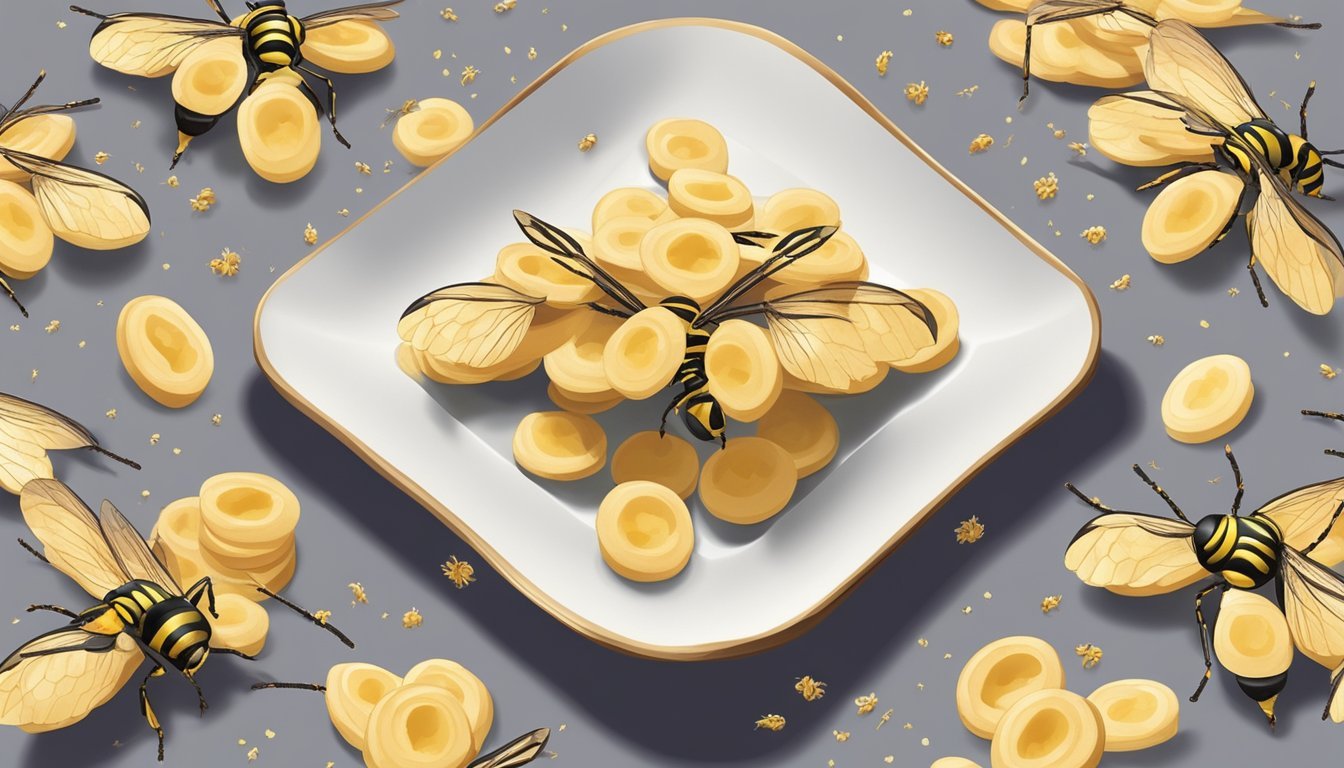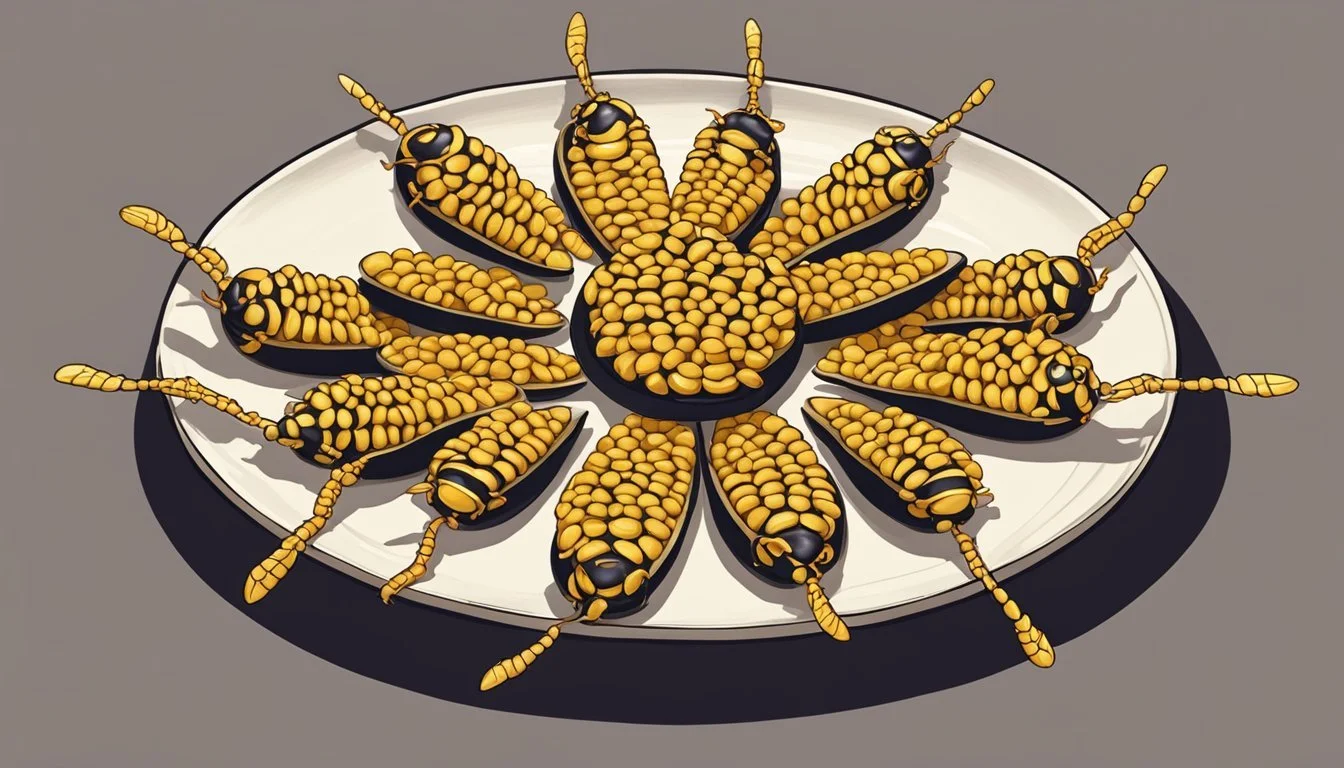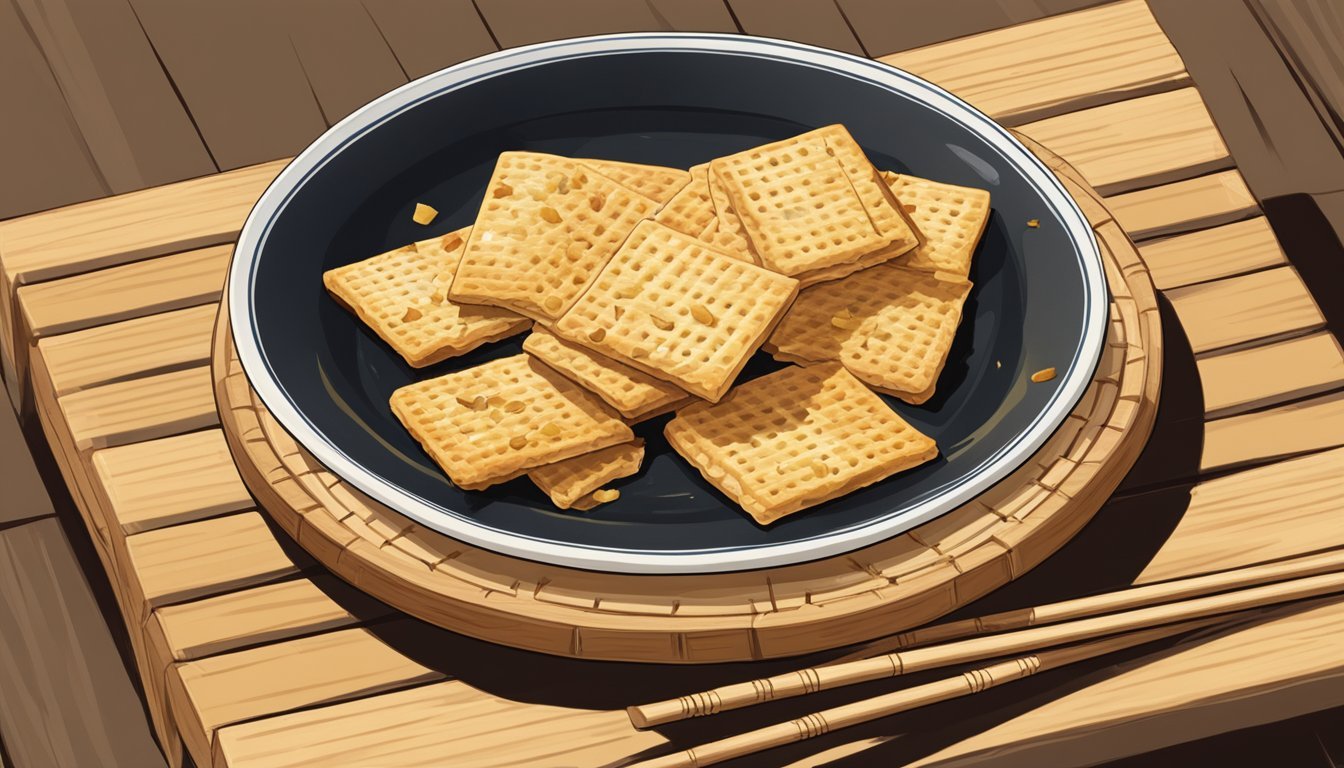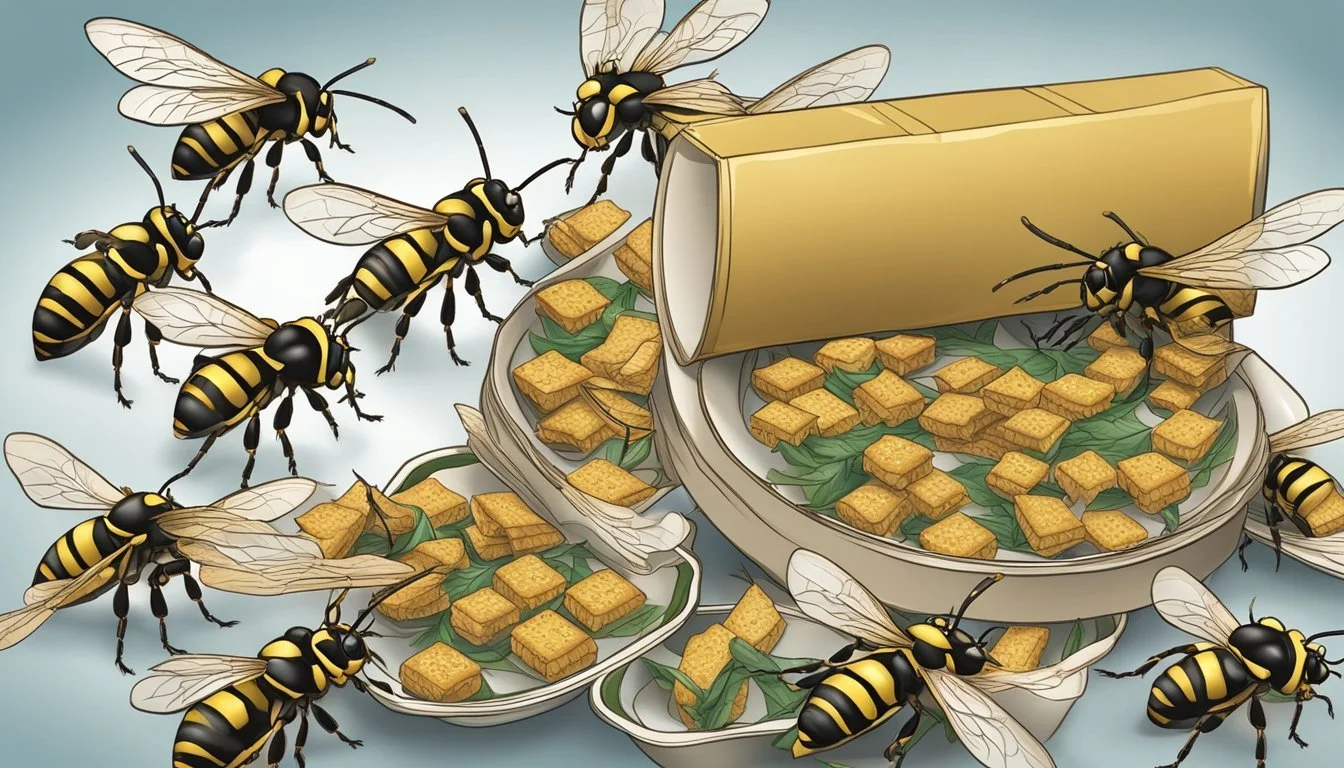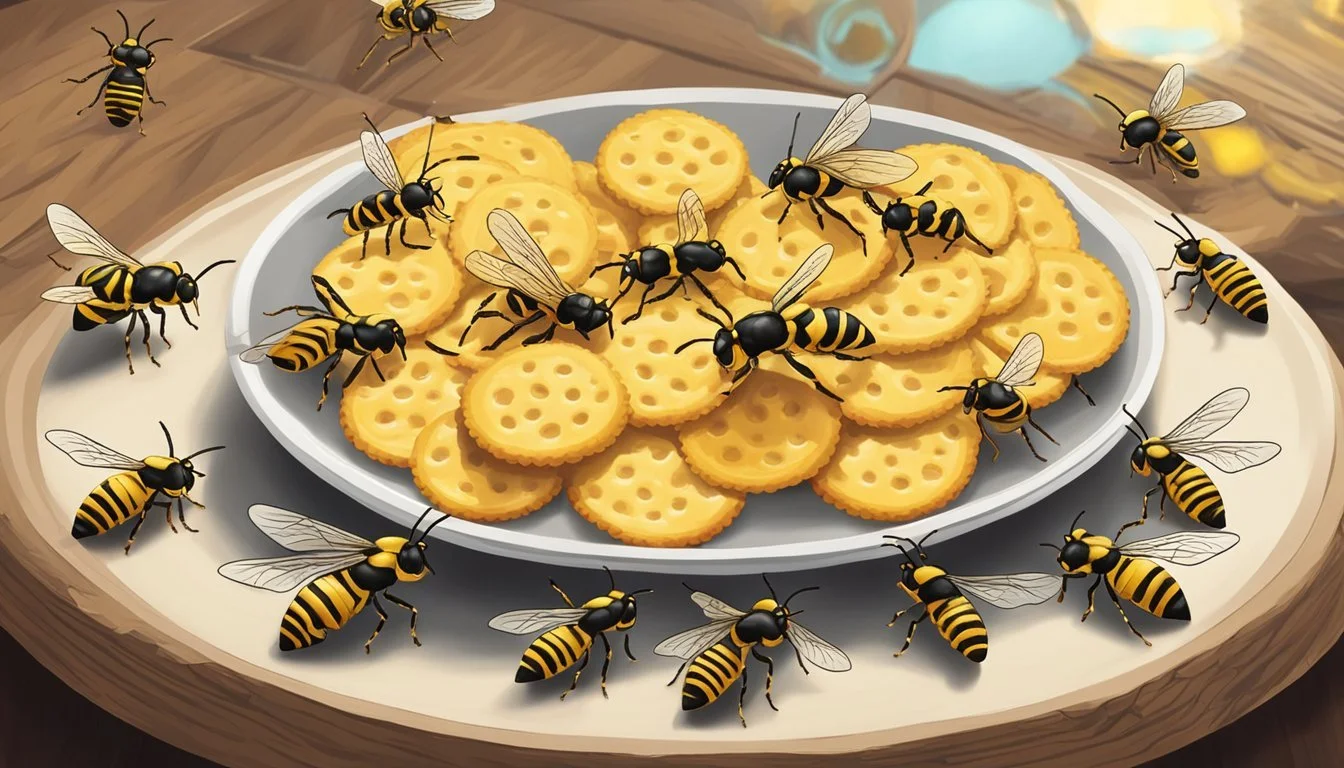Wasp Crackers Unveiling Japan’s Buzzworthy Snack Craze
In the tranquil village of Omachi, nestled amidst the picturesque landscape of Japan, a unique delicacy is garnering international curiosity. Known as wasp crackers, or 'Jibachi Senbei' in Japanese, these savory snacks defy convention by incorporating an ingredient that most would shudder at: wasps. Crafted with precision and tradition, wasp crackers are a testament to Japan's culinary boldness and its reverence for the natural world, embodying flavors that challenge and intrigue the palate.
This intriguing snack traces its origins to a collective of elderly wasp hunters, who, dedicated to an age-old practice, carefully trap digger wasp species in the forests surrounding Omachi. The captured wasps are then boiled, dried, and intricately mixed into senbei rice cracker batter. The result is a fusion of crisp, nutty textures with a subtle, insect-derived undertone, a flavor profile as daring as it is distinctive.
Wasp crackers transcend the conventional snack, emerging as a symbol of regional pride and resourcefulness. As a part of Japan's diverse array of delicacies, wasp crackers offer a glimpse into a unique culinary tradition that honors both flavor and the environment. Whether they elicit fascination or apprehension, Jibachi Senbei continues to create a buzz, inviting the adventurous to explore the bold tastes that define Japan's gastronomic landscape.
What Are Wasp Crackers?
Wasp crackers, known as Jibachi Senbei in Japan, are an intriguing snack that infuses the traditional rice cracker, or senbei, with edible wasps. They are known for their unique incorporation of insects and the cultural significance they carry within certain regions of Japan.
History of Wasp Crackers
The creation of wasp crackers can be traced back to Omachi, Japan. Here, the Omachi Jibachi Aikokai, a fan club of wasp enthusiasts, collaborated with local cracker makers to innovate this unusual treat. Historically, it wasn't uncommon for older wasp hunters, often in their 80s, to set out to catch digger wasps which are then used in the making of these crackers. This practice represents a form of gastronomical tradition, offering insight into local customs and culinary adventures.
Production Process
The production process of wasp crackers involves several meticulous steps:
Trapping and Gathering Wasps: Elderly hunters set traps in the nearby countryside to catch digger wasps.
Preparation of Wasps: The caught wasps are then boiled and dried.
Mixing Ingredients: Key ingredients, which include water, eggs, sugar, salt, oil, sesame seeds, and soy sauce, are mixed to form the cracker dough.
Adding Wasps: The prepared wasps are sprinkled over the cracker dough.
Forming the Crackers: Finally, the dough is stamped into shape using hot iron cutters that provide the final senbei form.
Each step is crucial and contributes to the overall flavor and texture of the wasp crackers.
Culinary Significance
In Japan, wasp crackers offer more than just an exotic flavor; they represent a longstanding tradition of utilizing local ingredients in innovative ways. Senbei, the base of wasp crackers, have been a staple in Japanese snack culture for centuries. The inclusion of wasps is a testament to Japan's open-minded approach to edible insects and their commitment to sustainable gastronomy. For many, consuming these crackers is a form of cultural appreciation and adventure, serving as a rare experience for locals and tourists alike.
Nutritional Profile
Wasp crackers, a unique snack originating from Japan, incorporate digger wasps, offering a notable protein boost to the traditional senbei rice cracker. This section breaks down the protein content and health benefits of these unconventional treats.
Protein Content
Digger wasps, which are a key ingredient in wasp crackers, are a source of animal protein. The inclusion of whole wasps – both larvae and adults – contributes to the protein content of the crackers. Protein is crucial for building and repairing tissues, and the specific amount varies based on the number of wasps incorporated into each cracker.
Health Benefits
The nutritional benefits of wasp crackers extend beyond protein. In general, insects like digger wasps contain a variety of vitamins and minerals. Though the exact nutritional profile of wasp crackers is not commonly detailed, they likely inherit some of these micronutrients, contributing to a healthful diet when consumed in moderation. However, it's important to note that one should always consider dietary restrictions and potential allergies before trying new foods, especially insect-based products.
Cultural Context
Wasp crackers, known as Jibachi Senbei in Japan, have a distinct place in Japanese cuisine, showcasing the country's willingness to embrace unconventional ingredients. This delicacy is a prime example of Japan's long-standing connection to nature and its resources.
Wasp Crackers in Japanese Culture
Wasp crackers are a unique snack that incorporate a bold ingredient—digger wasps—into traditional rice crackers. These snacks are not a recent fad; they reflect Japan's broad culinary palette that extends back centuries, often including insects as a protein source. Itadakimasu, a phrase said before eating that shows gratitude for the food, encompasses the respect for these natural ingredients, no matter how unconventional they may seem to outsiders.
Regional Popularity
The production and consumption of wasp crackers are particularly prominent in the rural town of Omachi, located in the Nagano Prefecture. Nagano's mountainous geography and relative seclusion have contributed to the preservation and popularity of local culinary customs, including the creation of Jibachi Senbei. This snack is not widespread in Japan and remains a regional specialty of Nagano.
Cultural Relevance
Historically, during the Edo Period, Japan developed a diverse food culture that was adaptive and innovative, using available resources. This period also saw the cultivation of a refined culinary aesthetic. The inclusion of insects in snacks like wasp crackers mirrors this historical openness to resourcefulness. Despite their modern rarity, such traditional foods maintain their relevance through cultural festivals and local markets, honoring the culinary heritage and contributing to Japan's rich gastronomic tapestry.
Consumer Experience
In exploring the consumer experience of Wasp Crackers, individuals often express curiosity and intrigue due to the inclusion of an unconventional ingredient. The sensory journey from taste and texture to the appropriate condiments and drink pairings creates a unique snacking adventure.
Taste and Texture
Consumers generally describe the taste of Wasp Crackers as savory with a hint of sweetness, influenced by the traditional ingredients of soy sauce and sugar. The texture is a juxtaposition between the familiar crispness of rice crackers and the distinctive crunchiness of the wasps themselves. First-timers may be surprised by the resilience of the wasp's texture as it contrasts with the cracker's snap.
How to Eat Wasp Crackers
Wasp Crackers are not just a snack but an experience. Most people consume them as they would any other senbei—directly out of the packaging and often with no additional condiments. However, adventurous eaters might consider a touch of butter to complement the cracker's inherent flavors.
Pairing with Drinks
When it comes to pairing drinks with Wasp Crackers, a neutral and clear palette is recommended to allow the crackers' complex flavors to shine through.
Light beers: Provide a refreshing counterbalance to the rich soy sauce flavor.
Tea (green or oolong): Enhances the crackers’ savory notes without overshadowing them.
By choosing a complementary drink, consumers can enhance their snacking experience and appreciate the nuanced flavors of this unique Japanese treat.
Sourcing and Sustainability
In the Japanese village of Omachi, the traditional practice of making jibachi senbei involves meticulous sourcing methods and raises important questions about environmental sustainability.
Harvesting of Wasps
In the forests surrounding Omachi, digger wasps are trapped by local elderly wasp hunters specifically for the production of jibachi senbei. The hunters use a variety of traps to capture the wasps which are then intended for inclusion within these unique rice crackers. The wasps are later boiled and dried, preparing them for incorporation into the senbei. The process is deeply rooted in local tradition, and most of the hunters are in their 80s, reflecting a practice passed down through generations.
Environmental Impact
The environmental impact of harvesting digger wasps for jibachi senbei is a subject of debate regarding sustainability. Digger wasps play a role in the local ecosystem, particularly in their contribution to controlling other insect populations, including pests. Concerns arise if the trapping were to scale significantly, potentially disrupting this balance. However, the activity centers on a small scale and traditional approach, minimizing its ecological footprint.
Sustainability initiatives focus on ensuring that the wasp harvesting practices do not lead to depletion of the local wasp populations. Unlike the invasive murder hornet that poses a threat to native species, digger wasps are native to Japan. The sustainability of this practice relies on continued careful management and respect for the ecological role of the wasp populations involved.
Market and Availability
Jibachi Senbei, a unique fusion of traditional rice crackers with a savory crunch of wasps, is a snack that has piqued the curiosity of food enthusiasts. Its availability primarily hinges on local practices and a growing international fascination with exotic foods.
Local Availability in Japan
In Japan, Jibachi Senbei can be found predominantly in the rural village of Omachi, where it originated. Locally, elderly hunters adept at trapping digger wasps facilitate the production of these crackers. These traditional snacks are not commonly stocked in metropolitan hubs like Tokyo, but they might be encountered in specialty stores focusing on regional delicacies.
Omachi: Primary source; availability through local vendors and producers
Tokyo: Limited availability; specialty shops may stock as exotic delicacies
International Interest
Although not widely distributed globally, Jibachi Senbei has garnered attention as part of the exotic food trend. Countries like the U.S., Vietnam, and India, renowned for their openness to unique culinary experiences, may offer these snacks through importers specializing in Japanese cuisine.
U.S.: Available via niche importers and online marketplaces
Vietnam: May be accessible in select Japanese food (What wine goes well with Japanese food?) outlets
India: Limited access, potentially in exclusive Japanese restaurants or specialty stores
Interest in such exotic snacks often fluctuates, influenced by cultural events and culinary trends. Therefore, international availability can be sporadic and mostly confined to individuals seeking a taste of Japan's vast and diverse gastronomy.
Social Media and Trends
Wasp crackers, known as Jibachi Senbei in Japan, have generated considerable interest on various social media platforms. They have become a fascinating topic due to their unconventional ingredient – wasps. This section explores the online conversations and media attention surrounding this unique snack.
Online Buzz about Wasp Crackers
On social media platforms such as Twitter and Facebook, Jibachi Senbei has been a topic of curiosity and fascination. Users often share images and personal anecdotes of their encounters with wasp crackers, sometimes using hashtags like #WaspCrackers or #JibachiSenbei. Lists and photo threads about unique Japanese foods often include wasp crackers, reflecting their popularity among food enthusiasts.
Twitter Mentions:
Authentic reactions and reviews
Viral photos of the snack
Facebook Discussions:
Personal stories of trying Jibachi Senbei
Shared articles about the snack
Media Coverage
Media outlets such as SoraNews24 have contributed to the trend by offering in-depth coverage of wasp crackers. These articles typically feature interviews with the elderly wasp hunters in Omachi, Japan, and provide a closer look at the traditional production process. The coverage tends to highlight both the cultural significance and the sheer novelty of the snack, which in turn fuels further social media discussions.
Key Media Contributors:
SoraNews24: Featured interviews and articles
Food Blogs: Reviews and exploratory posts
By presenting these unusual treats in a clear and factual manner, the media coverage complements the social media trends, fostering a well-rounded online presence for Jibachi Senbei.
Challenges and Controversies
While jibachi senbei, or wasp crackers, are considered an exotic food with a rich cultural background in Japan, concerns over food safety and ethical considerations present challenges and controversies surrounding this unique snack.
Food Safety
Food safety is a priority when it comes to the consumption of wasp crackers. The process involves boiling and drying the wasps before they are added to the rice cracker batter. Regulatory agencies oversee the safety of such exotic foods, ensuring they are free from contaminants and safe for consumption. However, the idea of eating insects, and specifically wasps — which include species known colloquially as "murder hornets" due to their powerful stings — can raise concerns among consumers unfamiliar with the practice.
Ethical Considerations
The ethical considerations in the production of wasp crackers revolve around the hunting and use of live creatures for food. The locals, often elderly, who hunt these wasps follow traditional methods that have been passed down through generations. The wasps are trapped, boiled, and dried, raising questions about animal welfare among those who oppose the use of insects in food. Moreover, discussions around the sustainability and ecological impact of harvesting wasps from the wild come into play, as the balance of local ecosystems could be affected.
Looking Forward
The future of wasp crackers hinges on the sustainable practice of wasp hunting and the integration of innovative flavors that cater to a wider palette.
Future of Wasp Crackers
The longevity of wasp crackers as a culinary curiosity depends on both environmental sustainability and cultural acceptance. The diligent hunters of Omachi have already laid a foundation for ethical sourcing, but they must ensure that the wasp populations remain stable. Sustainability initiatives might include controlled hunting seasons and limits to preserve ecosystems. In terms of cultural acceptance, proponents are looking to educate potential consumers on the nutritious benefits of these insects, likening them to other protein-rich snacks, such as squid or salmon roe, which also had to cross cultural barriers to gain widespread acceptance.
Innovations in Flavor and Texture
In pursuit of wider appeal, artisans are exploring new flavor profiles and textures that complement the nutty, crunchy wasp inclusion.
Textures: Efforts to vary texture include pairing the existing crunch of the wasp crackers with contrasting components such as creamy honey fillings or toast-like elements, offering a multi-sensory eating experience.
Flavors: Flavor innovations may draw from other insect-based dishes, like those using ants, known for their lemony tartness. Infusions with local spices or umami-rich condiments could transform the crackers into a gourmet experience.
The evolving culinary landscape looks promising for wasp crackers as they make their way from novelty to niche gourmet delight for the adventurous foodie.

